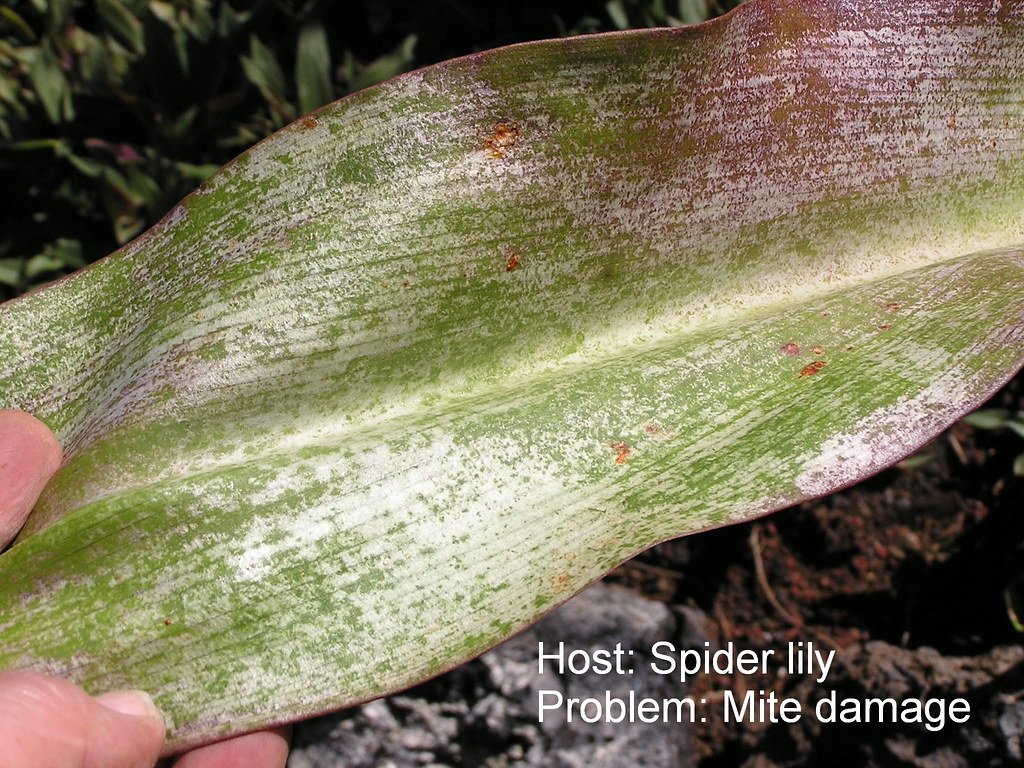By Sandra Nelson
Technically not a spider or an insect, the spider mite is a member of the arachnid family. (In case you’ve forgotten your grade school science, arachnids are invertebrates with exoskeletons, segmented bodies and at least three pairs of jointed legs.) World wide there are literally thousands of varieties of mites, but here in the United States the two-spotted mite, active in hot weather, and the spruce mite, active in cooler weather, are the most common.
These microscopic sized creatures (smaller than 1/60th of an inch) cause damage by sucking juices from the cell walls of over 200 different species of common indoor and outdoor plants. This causes the foliage to appear stippled, or marked with small, whitish spots. Eventually, as damage continues, the mottled leaves turn brown and fall off. If not stopped, spider mite damage can quickly kill a plant.

Two-spotted spider mites feed on a variety of garden plants ranging from phlox and marigolds, to vegetables like tomatoes and cucumbers, as well as shrubs and even trees. Spruce mites are usually found on conifers such s pines, spruce and junipers.
Adult, female spider mites live for about 30 days, producing, on average, 100 eggs during their lifespan. Eggs develop and fully mature within 5 days, which means that at least 10 generations of spider mites are produced within a two month period. They live in large groups and since they are easily carried by the wind, their colonies tend to spread from plant to plant.
Because they are so small, spiders mites are difficult to see with the naked eye. A fine webbing on the foliage of the infected plant is often a clue that spider mites are present, even before damage occurs. Another test to confirm their presence is to shake a suspicious leaf over a blank white sheet of paper and watch for movement.

Photo credit: Michigan State University
For mild outbreaks, spray the foliage with strong streams of water. Make sure you spray both on top of and underneath each leaf. For moderate cases, spray plants with insecticidal soap or horticultural oil sprays. If the infestation is especially heavy, it may be best to remove the plant entirely. Biological controls are also effective in controlling infestations. Damsel bugs, lacewings and lady beetles (lady bugs) are natural predators of spider mites and can also help control infestations. Beneficial insects can eat hundreds of pests a day!





